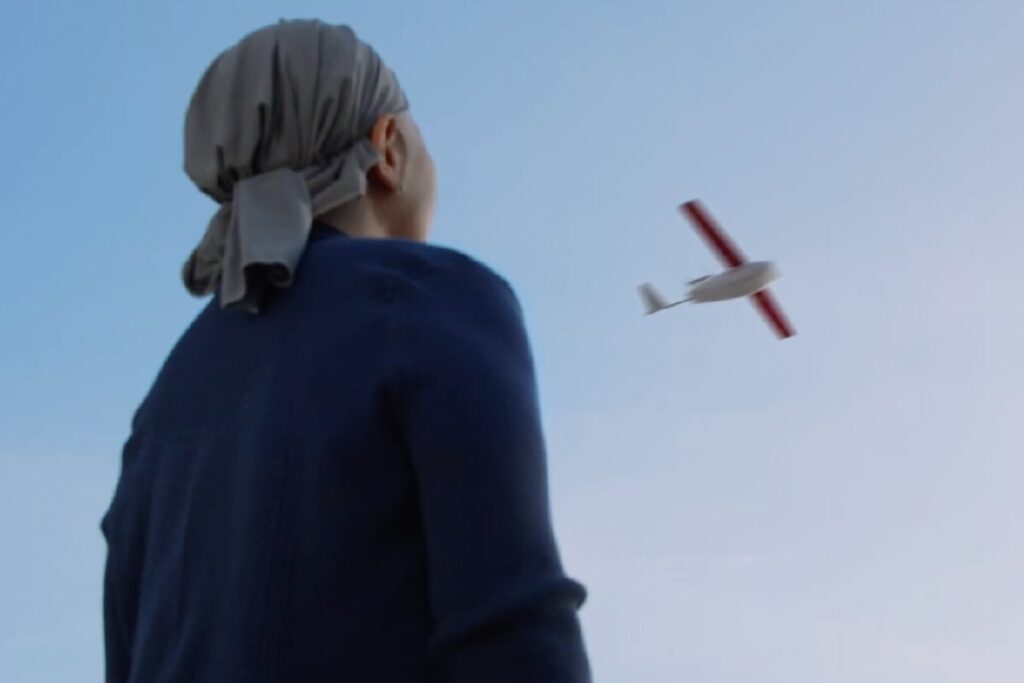A few weeks ago, the announcement of a partnership destined to make people talk about itself: Walmart (today the largest retail chain in the world) and Zipline (a company that delivers its products by drones in several countries around the world) have decided to join forces and give life to an ambitious project whose ultimate goal is “to bring the first drone delivery service to the United States“. Such experiments had already been successfully carried out in the state of North Carolina, but this project uses fixed-wing drones – and is the first time in the US. These devices are capable of carrying heavy packages over a long distance range: the challenge now is to get the packages to consumers’ homes, which is not an easy task for several reasons.
To launch the initiative, Walmart and Zipline have done a press release and put online a video showing the idea of package delivery. The press release states that “the new service will make on-demand deliveries of health and wellness products” and that testing will begin at Walmart headquarters in the state of Arkansas. The drones will be able to cover deliveries up to 50 miles away.
But it is the contents of the video that raise legitimate questions, the answers to which raise questions about the actual success of the delivery project by drones. But let’s get into the details.
In the first seconds of the video, we witness the preparation of the order and the “launch” of the package: everything is regular, and then we arrive at 0.22 minutes of the video. While a drone flies over a rural area, we think of the fact that it is an airspace in which other drones can operate (with the risk of collision), but also aircraft. While Zipline drones are able to detect other aircraft equipped with ADS-B transmitters, it is possible that they will not detect aircraft that do not have them (such as consumer drones). The risk of a collision is high: even if the sky is large and nothing may ever happen, it is an eventuality to think about. Flying higher than 400 feet would be a simple solution, but here comes the United States Federal Aviation Administration, with which the two companies are arguing. In short, it is a complicated and urgent issue to be resolved.
Next problem: Delivery accuracy is difficult (if not impossible) to achieve, especially if the package is attached to a parachute launched from a fixed-wing drone. And this is really a big problem if you think about the fact that a gust of wind could move the package away from its final destination, or maybe the package could end up at the wrong address, or worse on the roof of the house. What if the package falls on a street where cars are driving? In short, there are many doubts and the companies, contacted about it, replied that there will be continuous updates on the technical developments of the product launch. An answer that is not very clear and that casts even more shadows on the actual feasibility of the service.
Putting aside these and other observations that the video can raise, what can two important realities like Walmart and Zipline create useful? Perhaps not drone delivery in densely populated urban areas: it is almost impossible to deliver by air in large cities and / or metropolises. But, actually, large companies do not need it, as they are already served by different and successful home delivery systems.
A separate discussion should be made for rural areas – the same ones for which the Zipline company was born. Zipline is super efficient at delivering to isolated locations – a niche to focus on for drone delivery, for a variety of reasons. One above all is the wide landing range of packages: homes are more likely to have courtyards and large green spaces that can easily support a zip parachute delivery.
Ultimately, the Walmart and Zipline project is interesting if developed to enhance a delivery service in rural areas, which would really benefit from it. Do heavily urbanized areas really need drones overhead that deliver packages? There are already many delivery systems, accompanied by interesting innovations (such as ground robots) still to be discovered and enhanced.
Such ambitious projects, such as that of these two companies, are the ones that Meteca, with its Briki technology, aims to tackle in the world of industry in a sector such as that of robotics in great growth.
Do you want to create an IoT project for the robotics and automation sector? Contact Meteca here.
